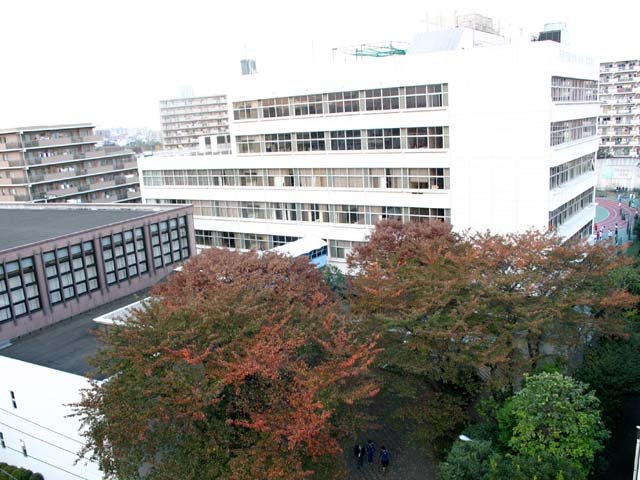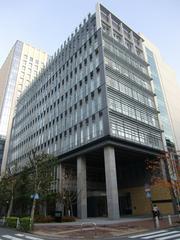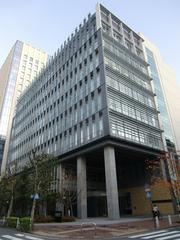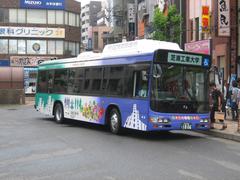
Shibaura Institute of Technology Visiting Hours, Tickets, and Tokyo Historical Sites Guide
Date: 14/06/2025
Introduction
Located in the heart of Tokyo, the Shibaura Institute of Technology (SIT) is recognized as one of Japan’s premier universities for science and engineering. Since its establishment in 1927, SIT has maintained a strong reputation for practical, project-based education and ongoing industry collaboration. Today, SIT stands out for its commitment to internationalization, innovative academic programs, and its blend of historic significance and modern campus life. This guide provides comprehensive information on visiting SIT, including campus access, historical site details, ticketing, tours, accessibility, and nearby attractions, making it ideal for prospective students, travelers, and anyone interested in Japan’s educational heritage.
For the latest updates and planning resources, refer to the official SIT website and related sources (SIT Historical Site).
Table of Contents
- Introduction
- Historical Development of Shibaura Institute of Technology
- Educational Philosophy: The Shibaura Model
- Visitor Information
- The SIT Historical Site
- International Programs and Campus Life
- Nearby Attractions and Travel Tips
- Frequently Asked Questions (FAQs)
- Summary and Planning Your Visit
- References and Further Reading
Historical Development of Shibaura Institute of Technology
Founding and Early Years (1927–1949)
SIT was established in 1927 by Dr. Shiro Arimoto as the Tokyo Higher School of Industry and Commerce. Its founding philosophy centered on practical, hands-on engineering education to foster Japan’s industrial growth. Unlike other institutions of its time, SIT’s early adoption of applied learning set it apart in the Tokyo academic landscape.
University Status and Postwar Growth
In 1949, SIT was officially chartered as a university. The postwar era saw rapid expansion of its academic offerings and facilities, enabling SIT to play a pivotal role in Japan’s technological advancement and economic recovery.
Modernization and Internationalization
From the 1950s onward, SIT expanded across multiple campuses in Tokyo and Saitama. Emphasizing internationalization, SIT set ambitious targets for global student and faculty representation, and by 2023 aimed to have 30% international students and 60% international faculty. This vision supports SIT’s goal to be among Asia’s top technical universities by its centennial in 2027.
Educational Philosophy: The Shibaura Model
SIT’s unique educational approach—known as the “Shibaura Model”—emphasizes active, project-based learning and industry collaboration. Through hands-on projects, internships, and research, students develop practical skills and global competencies essential for careers in STEM fields. Graduation projects and access to advanced research laboratories reinforce SIT’s commitment to experiential education.
Visitor Information
Access, Hours, and Admission
- Main Campuses: Toyosu and Shibaura in Tokyo, and Omiya in Saitama.
- Hours: Campuses are generally open to visitors from 9:00 AM to 6:00 PM on weekdays (Toyosu campus: 9:00 AM–5:00 PM).
- Admission: Entry to campus is free for visitors; however, some events, exhibitions, or workshops may require prior registration or a small fee.
Tours and Visitor Services
- Guided Tours: Available primarily for prospective students and academic guests by prior arrangement through the Division of Global Initiatives.
- Self-Guided Visits: Maps and information are available at main entrances. Some areas and laboratories may be restricted; check in advance.
Special Events and Cultural Activities
- Events: SIT hosts academic conferences, public lectures, technology exhibitions, and cultural festivals throughout the year. Events like the International Communication Project (ICP) and student innovation showcases are open to the public.
- Cafeterias: University cafeterias, managed by the Co-op, are open to visitors and provide a chance to experience student life.
Accessibility and Facilities
- Accessibility: Campuses are wheelchair accessible, with ramps, elevators, and accessible restrooms. Visitors needing special assistance are advised to contact SIT in advance.
- Photography: Permitted in most public areas, but always check with staff before photographing sensitive labs or exhibitions.
- Facilities: On-site amenities include rest areas, cafés, and souvenir shops (especially at the SIT Historical Site).
The SIT Historical Site
History and Exhibitions
The SIT Historical Site honors the university’s origins and its evolution as a leader in science and engineering. Exhibits chronicle SIT’s foundational role in Japan’s industrial and educational development, highlighting early industry collaborations and alumni achievements.
Visiting Hours, Tickets, and Facilities
- Opening Hours: Tuesday to Sunday, 9:00 AM–5:00 PM (last admission 4:30 PM)
- Closed: Mondays and public holidays
- Ticket Prices:
- Adults: ¥500
- Students (with valid ID): ¥300
- Children under 12: Free
- Guided Tours: Weekends at 11:00 AM and 2:00 PM; advance reservation recommended.
- Accessibility: The site is fully wheelchair accessible and offers multilingual signage and audio guides in English, Japanese, and Chinese.
- Facilities: Café, souvenir shop, and rest areas on site.
For current information and ticket reservations, visit the SIT Historical Site website.
Special Events
The historical site regularly hosts exhibitions on technological innovation, industrial history, and cultural festivals. Open lectures and seasonal events provide additional learning and engagement opportunities.
International Programs and Campus Life
Student Demographics and Global Partnerships
SIT is home to a large international student community and maintains a robust network of global partner institutions, supporting exchanges, joint research, and cross-cultural projects (SIT IGP).
English-Taught Programs and Support
At least 13 undergraduate programs are taught entirely in English, making SIT accessible to non-Japanese speakers (College Abroad Guides). The Innovative Global Program (IGP) offers interdisciplinary and research-driven education. International students benefit from dedicated academic advising, language support, and orientation programs.
Research and Project-Based Learning
SIT encourages research collaboration through internships and project-based learning. Programs like the Lab Internship – Student Research Program enable students from partner universities (e.g., Institut Teknologi Sepuluh Nopember in Indonesia) to conduct research at SIT, often with tuition waivers (ITS Global Engagement).
Global Project-Based Learning (gPBL) brings together SIT students and international peers to solve real-world engineering challenges (SIT gPBL).
Campus Life and Multicultural Experience
The Toyosu campus is the main hub for international students, offering access to clubs, cultural exchange, and comprehensive support services (SIT Toyosu Campus). The multicultural campus life is further enhanced by ongoing events, language exchanges, and international festivals.
Nearby Attractions and Travel Tips
SIT’s Tokyo campuses are well situated for exploring the city’s cultural and historical landmarks:
- Tokyo Bay Area: Parks, shopping, and dining near Toyosu.
- Zojo-ji Temple and Tokyo Tower: Easily accessible from the Shibaura campus.
- Asakusa and Senso-ji Temple: A short train ride away for traditional culture.
- Edo-Tokyo Museum: Insight into Tokyo’s urban history.
- Sumida Aquarium and Tokyo Skytree: Popular family attractions.
- Saitama’s Railway Museum: Near the Omiya campus.
Travel Tips:
- Public Transportation: SIT campuses are conveniently located near major train and subway lines, including Toyosu Station (Yurikamome and Yurakucho Lines) and Tamachi Station (JR Yamanote and Keihin-Tohoku Lines).
- Parking: Limited on campus; use public transport when possible.
- Best Visit Times: Spring (cherry blossom season) and autumn (pleasant weather).
Frequently Asked Questions (FAQs)
Q: Are there entrance fees for visiting SIT campuses?
A: No, general campus access is free; some events or exhibitions may require tickets.
Q: Can tourists visit SIT’s research laboratories?
A: Access is generally restricted and requires prior permission.
Q: Are guided tours available?
A: Yes, by prior arrangement or during open campus events.
Q: What languages are supported for tours and signage?
A: English and Japanese are widely available; some sites offer Chinese language support.
Q: Is there parking on campus?
A: Parking is limited and primarily for staff and students; visitors should use public transportation.
Q: Are international students supported?
A: Yes, with academic advising, language support, and international offices on campus.
Q: Can visitors attend classes or lectures?
A: Regular classes are for enrolled students, but public lectures and seminars are sometimes open to visitors.
Summary and Planning Your Visit
Shibaura Institute of Technology is both a historic institution and a vibrant center for STEM innovation and multicultural exchange. Visitors can experience the university’s rich heritage, explore state-of-the-art facilities, and participate in a range of academic and cultural events. The SIT Historical Site offers further insight into Japan’s industrial and educational achievements. SIT’s location near major Tokyo attractions makes it an excellent starting point for further exploration of the city’s history and culture.
To plan your visit:
- Consult the official SIT website for current visiting hours, events, and tour options.
- For personalized inquiries or tour arrangements, contact the Division of Global Initiatives at [email protected].
- Download the Audiala app and follow SIT’s social media for the latest updates.
- Use public transportation for convenient campus access.
References and Further Reading
- Historical Overview and Visitor Guide to Shibaura Institute of Technology, 2025, Shibaura Institute of Technology Official Website (https://www.shibaura-it.ac.jp/en/about/index.html)
- Shibaura Institute of Technology Historical Site: Visiting Guide and Travel Tips, 2025, SIT Historical Site Information (https://www.shibaura-it.ac.jp/en/about/sit/historical-site)
- Shibaura Institute of Technology: International Programs, Visiting Information, and Exploring Tokyo’s Educational and Cultural Sites, 2025, SIT Global Initiatives (https://igp.shibaura-it.ac.jp/index.html)
- Visiting Shibaura Institute of Technology: A Cultural and Educational Landmark in Tokyo, 2025, SIT Visitor Information (https://www.shibaura-it.ac.jp/en/visit/toyosu.html)
- Lab Internship – Student Research Program 2025, Institut Teknologi Sepuluh Nopember (https://www.its.ac.id/international/2025/04/11/lab-internship-student-research-program-2025-intake-september-october-2025/)
































































































































































































































